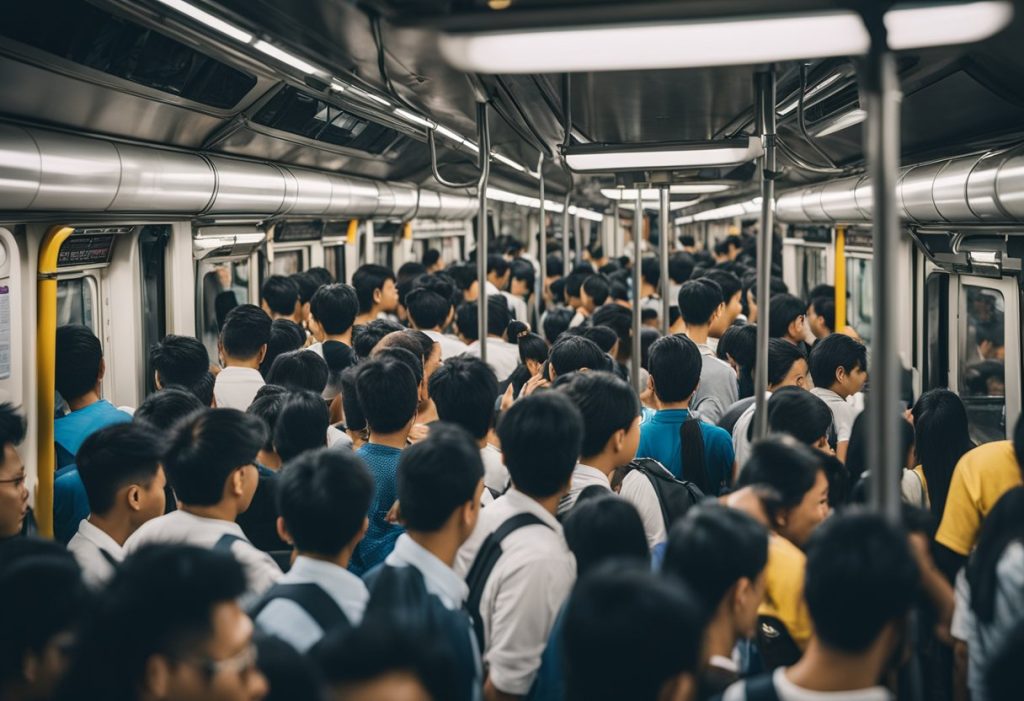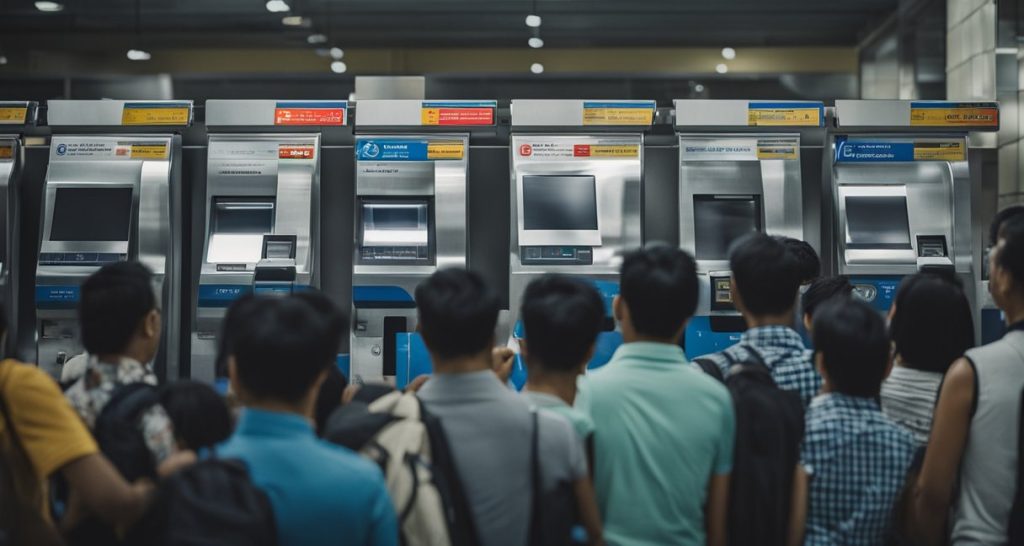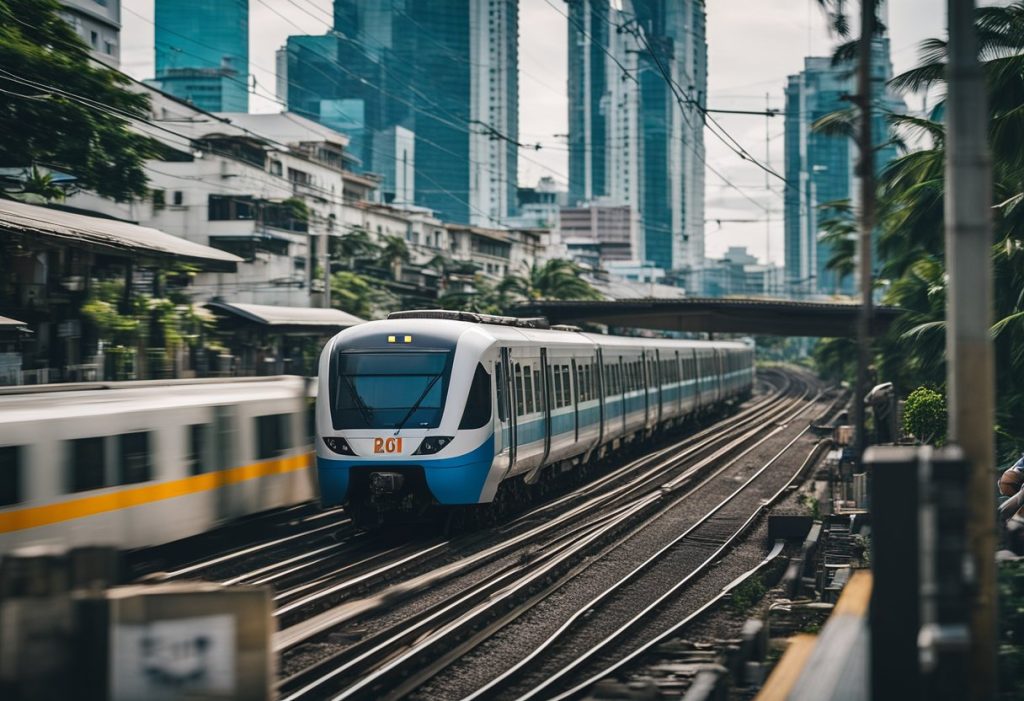Hey there, fellow commuters! If you’re anything like me, you know that getting around Metro Manila can sometimes feel like an extreme sport.
With the hustle and bustle of daily life, unpredictable traffic jams, and the occasional downpour, commuting in the Philippines can be quite the challenge.
But amidst all that chaos, there’s a silver lining: the MRT system!
For many of us, the MRT has become our trusty sidekick in navigating the city. Whether you’re heading to work, meeting friends, or running errands, hopping on the train is often the fastest and most convenient way to get around. It’s like having a secret shortcut that whisks you away from the gridlock and straight to your destination.
In this blog post, we’ll dive into a comprehensive guide to the MRT stations, routes, maps, and schedules. Whether you’re a seasoned commuter or a newbie trying to figure it all out, this guide will help you make the most of your MRT experience.
Overview of the MRT
Navigating through Metro Manila can often feel overwhelming, but the Manila Metro Rail Transit System Line 3, commonly known as MRT-3, provides a practical and relatively efficient way to travel across the city.
This elevated train system serves as a vital transportation link for over 300,000 daily commuters who need to avoid the heavy traffic typical of the region.
Understanding the layout of the MRT-3 and its various stations is beneficial for both new and seasoned commuters.
The MRT-3 line consists of 13 stations strategically located along EDSA, passing through several key cities: Pasay, Makati, Mandaluyong, San Juan, and Quezon City.
Each station is designed to connect passengers to nearby landmarks, commercial districts, and educational institutions, making it easier to plan trips efficiently.
MRT Stations
- Taft Avenue Station
- Location: Pasay City
- Key Features: This station acts as a transfer point to LRT-1, allowing commuters to switch lines easily. It is close to major bus lines heading to northern provinces.
- Landmarks Nearby:
- Ninoy Aquino International Airport
- SM Mall of Asia
- San Juan de Dios Hospital
- Magallanes Station
- Location: Makati City
- Key Features: Ideal for those commuting from the south, this station is adjacent to the South Luzon Expressway (SLEX) and provides access to several educational institutions.
- Landmarks Nearby:
- Assumption College
- Don Bosco Technical Institute
- Ayala Station
- Location: Makati City
- Key Features: Being a bustling hub, this station connects to the Makati Central Business District, attracting a large number of office workers and students.
- Landmarks Nearby:
- SM Makati
- Ayala Triangle Gardens
- Buendia Station
- Location: Makati City
- Key Features: Also known as Gil Puyat, this underground station offers access to various government offices and commercial centers.
- Landmarks Nearby:
- Department of Trade and Industry
- Century City Mall
- Guadalupe Station
- Location: Makati City
- Key Features: This station is well-connected to other forms of transportation, such as jeepneys and buses, making it a vital point for commuters heading to various destinations.
- Landmarks Nearby:
- Rockwell Center
- Makati City Hall
- Boni Station
- Location: Mandaluyong City
- Key Features: This station serves residents of the surrounding area, particularly students of Rizal Technological University.
- Landmarks Nearby:
- Robinson’s Cybergate
- SM Light Residences
- Shaw Boulevard Station
- Location: Mandaluyong City
- Key Features: Known for its two tracks, it serves commuters traveling to popular shopping and business areas like Ortigas Center.
- Landmarks Nearby:
- Shangri-La Plaza
- University of Asia and the Pacific
- Ortigas Station
- Location: Mandaluyong City
- Key Features: Positioned at the heart of the Ortigas Business District, this station is ideal for those working in the area.
- Landmarks Nearby:
- SM Megamall
- Asian Development Bank
- Santolan-Annapolis Station
- Location: Pasig City
- Key Features: Known for its proximity to various government offices and shopping centers, this station is a key stop for commuters heading north.
- Landmarks Nearby:
- Camp Aguinaldo
- Greenhills Shopping Center
- Araneta Center-Cubao Station
- Location: Quezon City
- Key Features: One of the busiest stations, it serves as a transfer point for those going to LRT-2 and is near several malls and bus terminals.
- Landmarks Nearby:
- Araneta Coliseum
- Gateway Mall
- Kamuning Station
- Location: Quezon City
- Key Features: Located in a vibrant area, this station is prominent for access to a variety of entertainment and government services.
- Landmarks Nearby:
- GMA Network
- Philippine Heart Center
- Quezon Avenue Station
- Location: Quezon City
- Key Features: This station is popular among students headed to the nearby university and offers convenient access to various educational institutions.
- Landmarks Nearby:
- University of the Philippines-Diliman
- ABS-CBN Network
- North Avenue Station
- Location: Quezon City
- Key Features: As the northernmost station, it connects commuters to shopping centers and parks.
- Landmarks Nearby:
- TriNoma
- Quezon Memorial Circle
MRT Stations Schedule: Your Guide to Timely Travels
The MRT-3 operates daily and is subject to heavy traffic during peak hours, particularly from 6:30 AM to 9:30 AM in the morning and from 7:30 PM to 10:30 PM at night.
The service begins as early as 4:36 AM from North Avenue and 5:18 AM from Taft Avenue.
One of the key aspects of a smooth MRT experience is knowing the train schedules. With a little planning, you can avoid long waits and make the most of your time in the city.
Here’s everything you need to know about MRT schedules to help you get where you need to go, right on time!
Operating Hours
The MRT operates daily, with trains running from early morning until late evening. Typically, the first trains depart around 4:30 AM, and the last trains leave the stations by around 10:30 PM. However, it’s always a good idea to check the latest updates, as schedules may vary on weekends or holidays.
Frequency of Trains
During peak hours, trains arrive every 3 to 5 minutes, making it relatively easy to hop on without a long wait. However, during off-peak times, the intervals may extend to about 7 to 10 minutes. If you’re commuting during rush hour, try to plan your trips accordingly to take advantage of the shorter wait times.
Real-Time Updates
To stay informed about any changes in the schedule, delays, or service interruptions, consider following the MRT’s official social media accounts or downloading their mobile app. These platforms provide real-time updates that can help you adjust your plans on the go.
Planning Your Trip
Before heading out, take a moment to check the MRT schedule for your specific route. Knowing the train times can help you plan your departure and arrival more effectively. If you’re unsure about your journey, you can also use various online resources and apps that provide route information and estimated travel times.
By keeping these scheduling tips in mind, you can navigate the MRT with ease and ensure you arrive at your destination on time.

How to Ride the MRT: A Friendly Beginner’s Guide
Are you gearing up for your first MRT ride? Exciting times ahead!
Beyond just memorizing the list of MRT stations, it’s essential to understand the whole commuting process. Don’t worry; I’ve got you covered with this handy guide!
Buying Your Ticket at the MRT Station
First things first, you’ll need to get your ticket. The cost of a train ride ranges from ₱13 to ₱28, depending on where you’re headed.
You have two ticket options to choose from:
- Single-Journey Ticket (SJT): This is perfect for a one-time ride and is valid only for the day you purchase it. Just let the ticket seller know your destination, and they’ll set you up!
- Stored-Value Card (SVC): Commonly known as the beepTM card, this reloadable option is super convenient if you plan on taking multiple rides. As long as you keep it loaded, you can skip the lines at the ticket booth and head straight to the automatic gate. You can load it with a maximum amount of ₱10,000, making it a great choice for frequent travelers.
Once you have your ticket, it’s time to tap your way through!
- At the Automatic Gate: If you have an SJT, simply insert your ticket into the gate’s inlet. If you’re using an SVC, just tap it on the sensor to enter.
Now you’re ready to hop on the train!
- Enjoy the Ride: Find a spot, hold on tight, and enjoy the journey as you zoom through the city.
- Getting Off: When you reach your destination, it’s time to exit. If you’re using an SJT, insert it into the inlet again. For the SVC, just tap it once more at the gate to leave.
How to Buy a Ticket Using the MRT Ticket Vending Machine (TVM)
Ready to use the MRT’s Ticket Vending Machine (TVM)? It’s super easy and convenient! Here’s a step-by-step guide to help you navigate the process like a pro.
- Choose Your Ticket: When you approach the TVM, you’ll see a screen with options. Start by selecting the type of ticket you want to purchase.
- For a Single-Journey Ticket (SJT): If you’re opting for an SJT, simply choose your destination and then insert your bills or coins.
- For a Stored-Value Card (SVC): If you prefer the SVC, just insert your bills or coins directly. Keep in mind that the TVM doesn’t give change, so make sure you have the right amount!
- Get Your Receipt: Once your payment is processed, don’t forget to press the Receipt button to print your ticket.
- Tap Your Way In: With your ticket in hand, head to the automatic gate. If you have an SJT, insert it into the inlet. If you’re using an SVC, just tap it on the sensor to enter.
- Enjoy the Ride: Now you’re all set to board the train and enjoy your journey!
- Exiting the Station: When you reach your destination, it’s time to get off. If you’re using an SJT, insert it into the gate’s inlet again. For the SVC, simply tap it on the exit gate to leave.
Tips for Commuters
Whether you’re a daily commuter or just hopping on for the occasional trip, we all know that the MRT can be a bit overwhelming at times.
From rush hour crowds to figuring out the best routes, it’s easy to feel a little lost. But don’t worry, you’re definitely not alone in this journey!
Here are some tips to make your MRT experience not just bearable, but actually enjoyable.
- Plan Your Route Ahead: Familiarize yourself with the MRT map and the stations along your route. Knowing where to transfer and the nearest exits can save you time and stress.
- Time Your Commute: Avoid peak hours if possible. The MRT tends to get crowded during morning and evening rush hours (around 7-9 AM and 5-7 PM). If you can, travel during off-peak times for a more comfortable ride.
- Arrive Early: Give yourself extra time to get to the station, especially if it’s your first time. This way, you won’t feel rushed and can navigate through ticketing and boarding at a leisurely pace.
- Use the Ticket Vending Machines: Save time by using the ticket vending machines instead of queuing at the ticket counters. Just follow the on-screen instructions, and you’ll be on your way in no time!
- Keep Your Essentials Ready: Have your fare and any necessary items (like your bag or umbrella) ready before you reach the ticket gate. This helps keep the line moving smoothly.
- Board Strategically: Stand behind the yellow line and let passengers disembark before you board. This simple courtesy makes it easier for everyone to get on and off the train.
- Mind Your Belongings: Keep your bags close to you and be aware of your surroundings. It’s always good to stay vigilant, especially during crowded rides.
- Be Patient and Polite: The MRT can get crowded, so patience is key. A smile or a kind word can go a long way in making the commute more pleasant for everyone.
- Know the Etiquette: Give priority seats to those who need them, like the elderly, pregnant women, and persons with disabilities. It’s a small act of kindness that makes a big difference.
- Stay Informed: Follow the MRT’s official social media accounts or download their app for real-time updates on schedules, delays, and other important announcements. Being informed helps you adjust your plans on the fly!
By keeping these pointers in mind, commuters can maximize their experience while using the MRT-3, making daily travel in this bustling metropolis a bit more manageable.
Understanding the MRT-3 Operation
The MRT-3 trains are typically quite crowded due to the volume of daily passengers. While some riders may find this discomforting, it remains a popular mode of transport due to its ability to bypass the often congested streets of Metro Manila.
Efforts to improve the system continue, with plans for adding new lines and upgrading existing infrastructure.
Manila Metro Rail Network Evolution
MRT Future Developments
The current MRT-3 line is only the beginning, as plans are underway for two new lines, which aim to enhance connectivity across Metro Manila and surrounding areas. These expansions are expected to address the increasing demand for more efficient public transportation options.
READ NEXT:
- How to Apply for PhilHealth ID and What are the Benefits
- Your Ultimate Guide to Buying PAG-IBIG Foreclosed Properties in the Philippines
- How to Pay Utility Bills Online Using a Credit Card in the Philippines








Speak Your Mind